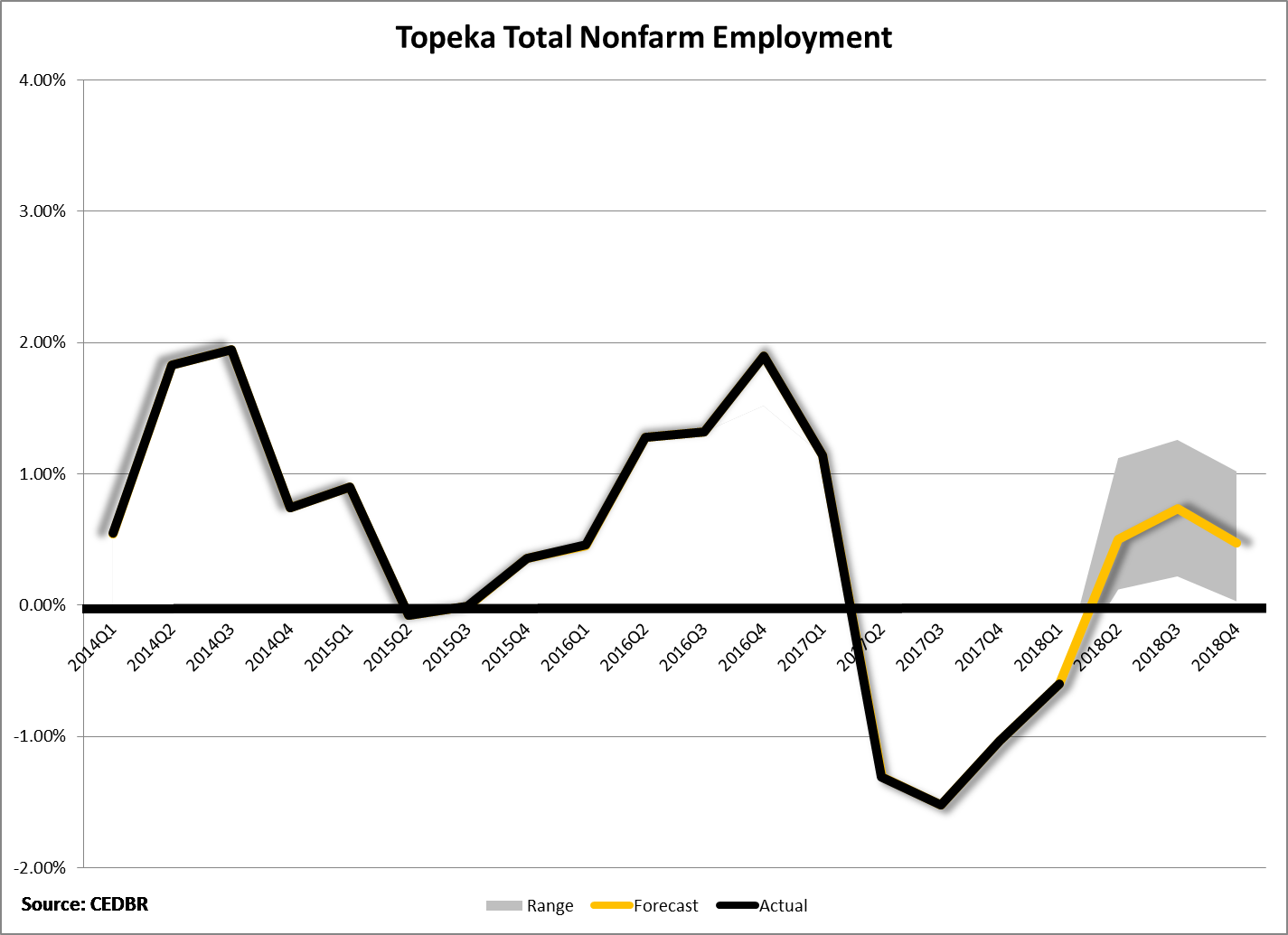Topeka Employment Forecast
Released May 23, 2018
In 2017, total nonfarm employment in the Topeka metropolitan area declined by 0.7 percent, a loss of approximately 800 jobs. In 2018, Topeka is forecast to add over 400 jobs with 0.4 percent growth. The expected range of Topeka employment growth is predicted to be between zero and 0.6 percent. Topeka has averaged 0.4 percent growth annually from 2010 to 2017, with a low of -0.2 percent in 2011 and a high of 1.2 percent in 2014.
- The production sectors are forecast to expand 0.7 percent, adding almost 100 new jobs. These jobs are projected to be split evenly between the manufacturing sector and the natural resource and construction sector.
- The trade, transportation and utilities sector is expected to remain relatively flat, adding less than 100 jobs. Both the wholesale and retail trade sectors, along with the transportation and utilities sector, are all forecast to have increases or decreases in employment of fewer than 100 jobs. After adjusting for inflation, taxable retail sales are projected to decline by 1.3 percent in 2018, following a 2.6 percent decline in 2017.
- The service sectors are projected to add 400 new jobs and grow 0.7 percent. This growth is predicted to be heavily concentrated in the education and health services sector and the leisure and hospitality sector, which are projected to grow 1.2 percent and 1.8 percent, respectively. In recent years, the professional and business services sector had been the fastest growing part of the Topeka economy, but in 2018 that sector is expected to have more muted growth, adding less than 100 new jobs.
- Government employment is expected to contract by approximately 100 jobs. State and federal employment are projected to decline, while local government employment is predicted to increase by less than 100 jobs.
Nationally, real GDP grew 2.3 percent in 2017, which was primarily driven by increases in personal consumption expenditures and private investment. National employment increased by 1.6 percent in 2017.
| DOWNLOAD PDF VERSION |



